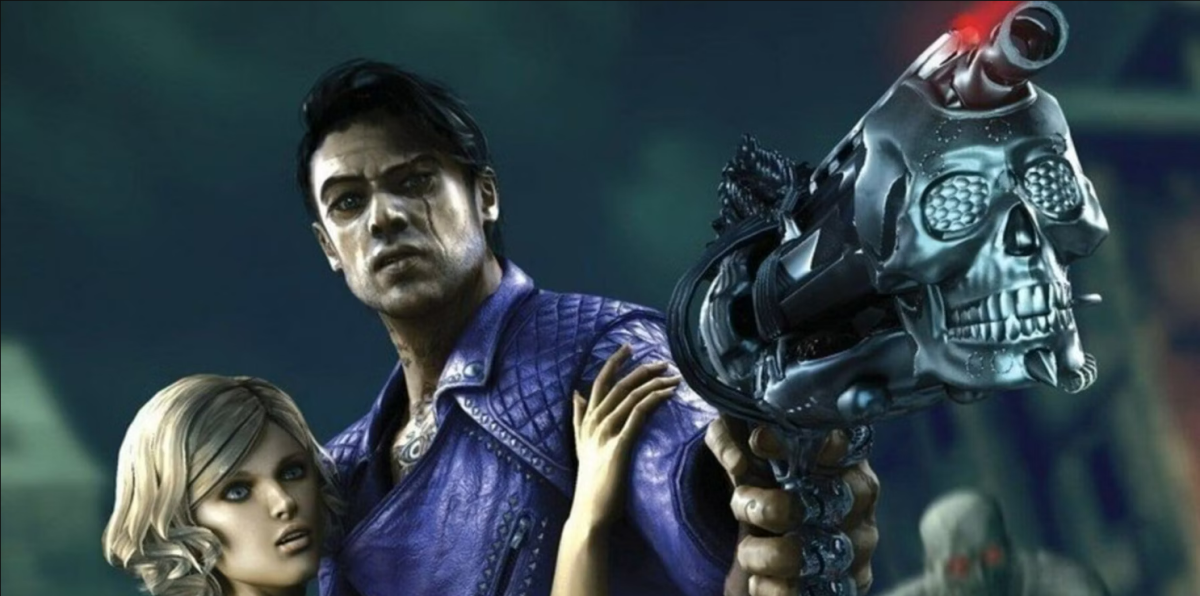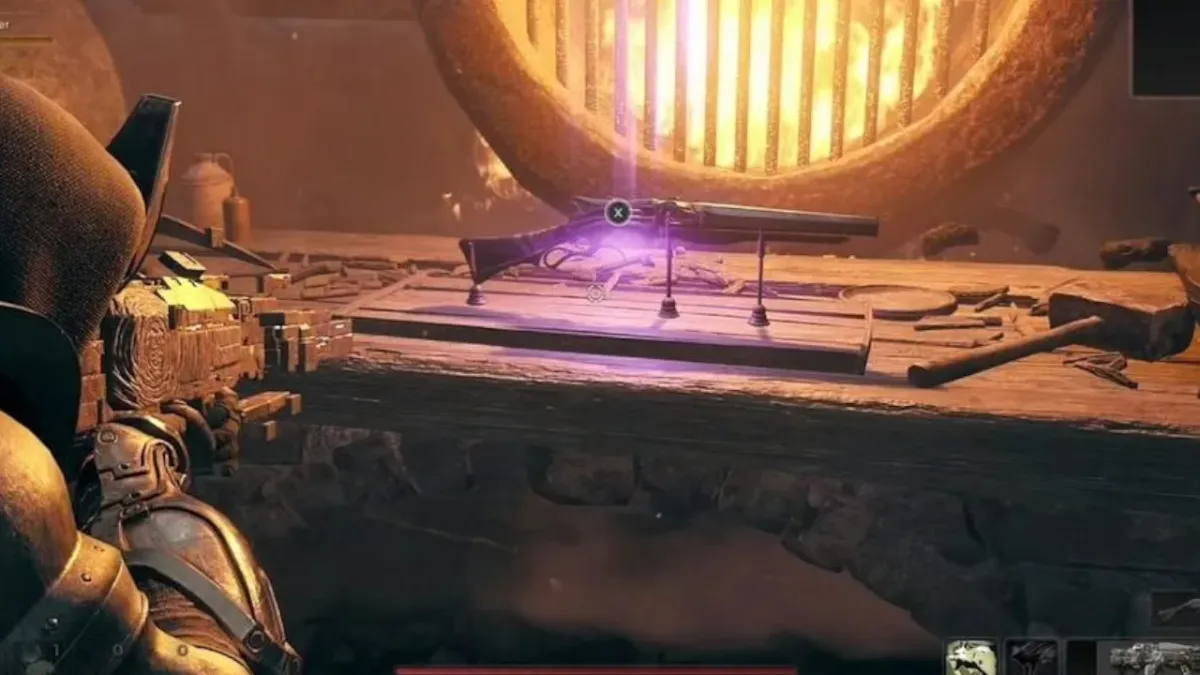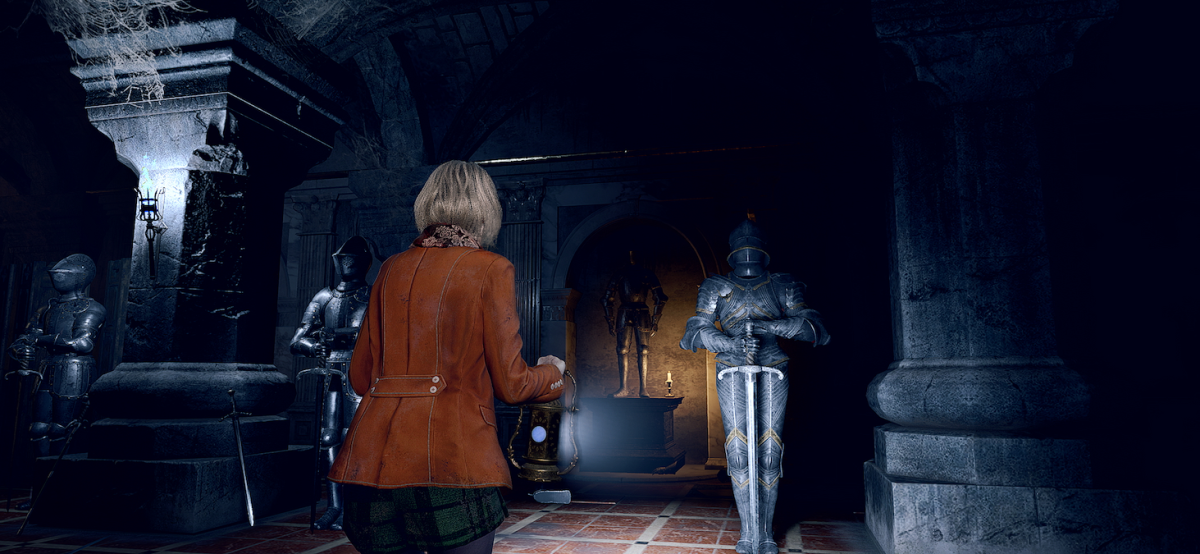Hang together, or hang separately
Assassin’s Creed III is likely to be one of the most massive titles of 2012. As vast as the American frontier it portrays and able to consume quite a few dozen hours with its single-player content alone, it is ambitious, visually stunning and packed with things to do.
Whether or not many of these things are enjoyable depends on how much you like busywork.

Assassin’s Creed III (PC, PlayStation 3, Xbox 360 [reviewed], Wii U)
Developer: Ubisoft Montreal
Publisher: Ubisoft
Released: October 30, 2012 (PS3, 360) / November 18, 2012 (Wii U) / November 20, 2012 (PC)
MSRP: $59.99
Following the messages hidden within his genetic memory, series protagonist Desmond and the team of Assassins supporting him have found the location of ruins left behind by the precursor race which once held dominion over the Earth. Now, they are in a desperate search to learn the secrets of this place, hoping to discover what happened to that lost race and if what they left behind might save humanity from an impending solar event threatening to destroy the world as we know it. But to reach the central chamber of these ruins, Desmond will need a key: an amulet lost hundreds of years ago, hidden by one of his ancestors, the location once again stored in Desmond’s DNA and to be discovered through the power of the Animus (a device which places its user into a simulation, allowing them to experience the lives of their ancestors).
It’s almost impossible to discuss the story elements of Assassin’s Creed III without spoiling it to some degree, and to go much further than this would risk ruining a number of the cleverer twists and turns in the 10-12 hour primary quest line. While there are always risks in an open-world game of disrupting the pace of a story, it feels easy to drop in and out of the main quest line without feeling like something has been missed. A tome’s worth of supplemental material (provided in-character by the modern Assassin team’s researcher) can bring players up to speed quickly in an entertaining fashion should any confusion arise.
While the tale does a fine job of engagement, for the most part, what is happening outside of the Animus simulation often feels more urgent and interesting than examining the role of Assassins and Templars in the American War of Independence. The fate of the Precursors and their efforts to avoid that fate are uncovered by exploring the ruins further, and the player is provided several opportunities to go deeper in this pursuit as the game progresses. Inside the simulation, the story makes an effort toward having the player question the philosophical differences between two organizations and whether “freedom” as a concept is merely a matter of perception. However, most of the cast are only lightly developed and the character of Connor (whom the player will spend most of their time controlling) is almost annoying in his blind, obstinate adherence to the idea of all mankind desiring and having a right to freedom.
Connor himself is a bit disappointing as a character. Whereas other heroes of the series experience a process of learning about the Creed and what it means for them and their time in history, this is largely disregarded for Connor, who (despite all the extraordinary things which he experiences) doesn’t exhibit significant development through the course of the plot and rarely demonstrates any emotional range except when it’s appropriate for him to display seething disgust, puzzled confusion or general disapproval. While the approach of resolute determination even in the face of death works brilliantly for the villainous Templars, putting them among the best enemies in videogames, it’s less effective for Connor, whose simplistic perspective often comes across as naive.
What Connor lacks in terms of engagement from a character perspective, he makes up for with physicality. Free-running has been dramatically improved in this installment, granting a greater sense of empowerment while reducing frequency of instances where the character jumps in an unintended direction because the game misinterprets the player’s intent. Spotting traversal lines through environments becomes second nature quickly, even in dense forest regions, a credit to their design. At the same time, control has been simplified to a single button to engage free-running and the game does a generally excellent job of providing a wide enough range in acceptable player input to ensure that characters go exactly where desired. It isn’t perfect and will occasionally fail the player, which is still annoying, but the problem is rare enough at this point to be mostly forgivable.
Connor is an almost unstoppable force in a combat situation, due in no small part to further simplification of the mechanics established in past games. Differences between melee weapons seem marginal at best and all that seems to be required to overcome any enemy is a small degree of patience in waiting for their inevitable attack so that it can be blocked and countered, opening the opportunity for instant kills of additional enemies. The window to block attacks is wide open and pressing the block button will interrupt nearly any of Connor’s attack animations, making the vast majority of enemies total pushovers. Later foes can resist this “block then stab” technique, requiring instead that they be blocked by pressing one button, have their defenses eliminated by a second and then killed, but that’s about as hard as it ever gets (save a few specific exceptions), making the employment of other methods (such as rope arrows, trip mines and smoke bombs) more a matter of personal preference and experimentation than practical application.

Not only are the enemies significantly less competent fighters than Connor, they’re also pretty terrible at chasing him down when you don’t feel like fighting. Most of this is down to how easy it has become to hide from enemies with the advent of new hiding spots (such as tall grass and shrubbery), the improved free-running controls, and changes to the blending mechanics which no longer require set groupings of people to constitute a crowd but merely need a couple of NPCs near the player’s position to blend in. Both of these types of hiding spots require no delay in their execution, no special animations which could give an enemy enough time to round a corner and spot Connor, and enemies aren’t particularly dogged in their pursuit once you’ve secured a hiding place, making it far easier to escape than in past games.
There’s more to do in the American frontier than in any prior installment, and players will spend more than half of the game’s main campaign missions discovering more activities to engage in. Collection goals remain a major component, with chests, feathers and pages from various editions of Benjamin Franklin’s almanacs dotting the landscape, waiting to be discovered. Hunting lodges ask for the player to kill animals in the frontier with a variety of techniques, while districts of the game’s two major city regions (Boston and New York) feature their own shopping list quests for the player to complete and a collection of “trinket” items progresses a seperate quest to discover the lost treasure of Captain Kidd. Other legends weave their way into these secondary quests, told as campfire tales between frontiersman, and the player will discover answers to Bigfoot and other American myths by exploring these quest lines.
Players will also be given an opportunity to rebuild the Assassin’s Guild in the Americas with Homestead and District Liberation quests. The Homestead quests practically constitute their own separate campaign from the main story, as Connor plays shepherd to a variety of characters displaced by the conflict around them and provides a place to start their lives anew. Each of these characters contributes to the homestead by making resources available for sale and completing later quests to improve their lives also improves the range of goods they offer. These resources can be sold to trading posts for cash by sending convoys or used in the creation of new items through a crafting system which allows players to make items based upon discovered recipes or experiment with resources and artisans to create new items without such guidance.

In the cities, the player will discover opportunities to rescue people from the oppression of English forces and turn them to Connor’s cause. Once enough have been rescued, a final mission opens for the district which will allow a new Assassin to be recruited. Recruited assassins can be used to provide distraction, protection or just outright elimination, each liberated district providing a new technique with the completion of its quest and an additional use of these abilities. In addition, guild recruits can be sent on missions throughout the colonies to liberate them from Templar control, earning money, resources and experience levels for the Assassin sent.
One particularly smart and ambitious change to the cities of Assassin’s Creed III lies in the unlocking of new fast travel locations. In prior games, these locations were discovered on the overworld and would put the player through an exploration of a closed environment to connect it with other fast travel locations. Here, Ubisoft has instead decided to create an entire underground maze beneath each of the two cities where these locations can be found. Instead of finding entrances to a (never clearly defined) network of passages, the player instead explores the actual route the fast travel system represents to find the exits, which can then be accessed through the map screen and instantly returned to. It’s a great change and quite satisfying to explore and one of the few optional objectives with any real impact on the larger game.
In terms of being downright fun to play, however, few things found in the game can top the naval battles. Accessed by speaking with a harbormaster, these missions put you at the wheel of a ship, giving orders to the crew to raise or lower sails and target enemies with cannons. Combat is frenzied, owing in part to the camera’s semi-locked perspective behind the player, as well as the pressure of waiting for weapons to aim and reload. These battles require some quick thinking and execution to complete and its highly enjoyable to watch enemy ships swallowed by the ocean after firing a barrage of cannons upon them.

Those who glean great satisfaction from completing a checklist will be in heaven, as Assassin’s Creed III is lousy with them. But if there is a desire to have these secondary elements contribute to the completion of the game’s primary objectives, it seemingly isn’t held by the developer, as the optional quests tend to only make it easier to complete more optional quests. Some of this is simply a result of not wanting to force the player to pursue activities they don’t enjoy, a pitfall of the open-world game design, but the rewards for completing the objectives aren’t commensurate with the effort required to accomplish them and are rarely meaningful in terms of enhancing play. Assassin Guild assignments, for example, reward with money and items but the experience levels earned by recruits only serve to facilitate completion of further assignments, making the whole thing a largely busywork affair with nary any payoff. Chests usually contain some cash and the recipes needed to make items which fulfill shopping list quests, and the artisans in the homestead are discovered and improved in order to produce these items. And while consumable items can also be produced by the artisans (as well as items which increase maximum capacity of these consumables), there’s little reason to do so other than the saving of a few sheckels, hardly worth the effort of going through a repetitive series of menus.
Menus themselves are a source of occasional frustration because of their organization. Four separate menus exist but none of them are unified and there’s no easy hop from one menu to the next without resuming the game should you accidentally make the wrong choice. Two individual menus exist for selecting equipment and the abilities of your Guild recruits when they very easily could have been reduced to one, and the latter is the only way to access the submenu for sending recruits on their missions. Likewise, the map screen contains lists of objectives and allows for the tracking of quest lines, but a separate top-level menu for the Animus is where you find research entries with expository material and other options. It’s not unnavigable, but annoys nonetheless.
Although many of the quest-oriented bits of secondary content can be a bit tiresome, there are other fun activities to engage in. There are a number of games of skill which can be played against the game’s AI for cash, with skill levels varying from one location to the next. Few things break up the process of collecting objects better than a round of bocce with George Washington.

The series’ beloved multiplayer mode returns in Assassin’s Creed III and is just as much fun as it has been in prior installments. The gameplay in this portion of the title is similar to that of its predecessors, where players must track down and eliminate a specific targets or complete other objectives without drawing attention to themselves in a variety of modes based on concepts of deathmatch, “capture-the-flag,” and “King of the Hill.” Players earn points for successful kills (receiving bonuses for doing so stealthily), as well as for successfully preventing attempts on their own lives and escaping pursuers. Points earned through play are applied as experience and reaching new levels unlocks new abilities, customization options and stories based on the various playable characters.
The most enticing aspect of the multiplayer is the new Wolfpack mode. This cooperative game for up to four players pits assassins as a team against increasingly capable AI opponents. Operating under a time limit, making kills awards more time in addition to points, allowing players to progress through the twenty-five stages necessary to complete a round. This spin on team-based play is tremendously enjoyable in a group and coordinating to hunt down targets highly satisfying. As an added bonus, players can attempt the mode alone if they can’t find others to support their efforts or wish to truly challenge themselves.
Ubisoft has chosen to implement their uPlay Passport system to limit — but not prevent — player access to multiplayer in Assassin’s Creed III. While a uPlay Passport (included with all new copies) is required to enjoy most of the elements of the mode, including much of the customization options, players without one will still be able to experience multiplayer up to a level cap.

When it comes right down to it, cohesion (or lack thereof) is the main issue with Assassin’s Creed III. There are dozens of secondary elements which make up the content of the game, but they offer little in terms of reward and rarely contribute anything to the Assassin/Templar conflict. While the game is often quite fun, beautiful to look at and empowering to the player, it doesn’t offer much challenge beyond the endurance necessary to complete all of the single-player campaign elements. That said, it does offer answers to many of the questions players have in terms of the series’ plot up to now and is easy to become absorbed in. Fans of Assassin’s Creed should be amply satisfied by these aspects, but some of the shallowness found might be displeasing to lovers of other open-world titles which do a better job of making player investment feel meaningful.





